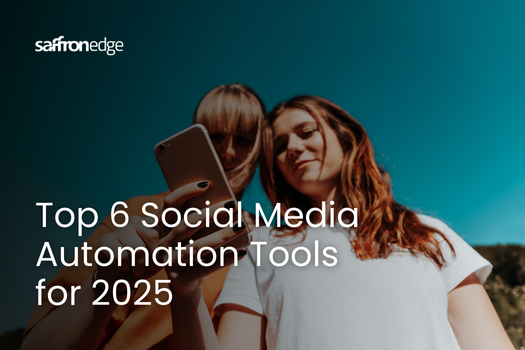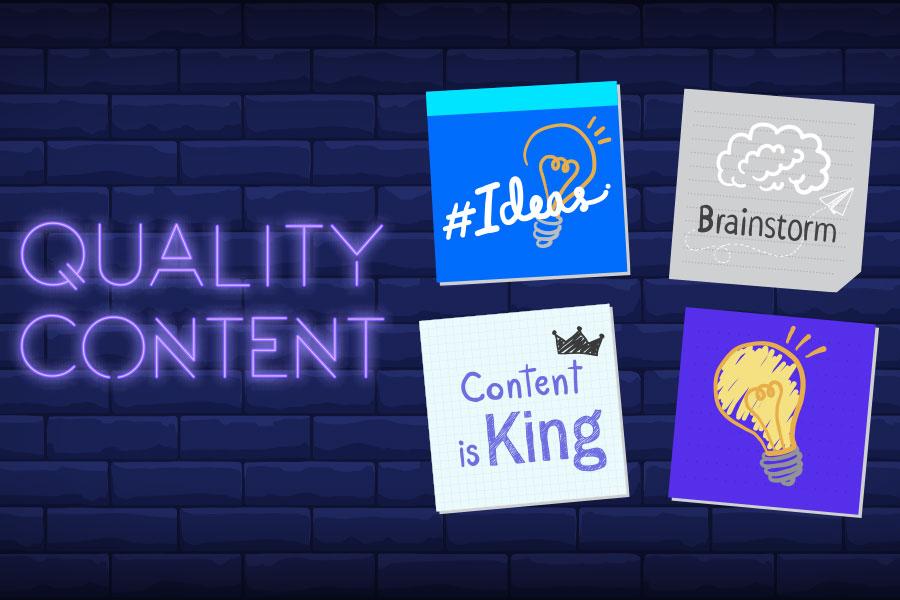Instagram is impactful where it matters most today – visually.
The modern consumer has an ever-thinning attention span, now only 8 seconds. While once marketers felt comfortable publishing a page full of words in their ads, they must now employ mere phrases.
A Picture is Worth a Thousand Words
This may be an old adage but is more applicable today than ever.
The modern human brain is bombarded with information. When they wake up, they check emails and messages. As they get ready, every household item, including their cereal and bread, is covered in marketing collateral that seeks to make a lasting impact. As they drive to work, billboards seek their attention. The radio is laced with ads. Even the cars in the traffic jam may be stamped with brand logos.
They have already witnessed more information than the people two generations ago might have in an entire day – and they haven’t even started the day with a morning coffee yet!
If the old ways of marketing are useless in 2022, then what works?
Instant/ Moment Marketing
The mantra of modern marketing is to catch the user in the moment.
If your copy promises an impact in the future, you may have already lost the reader. If your visual does not stand out in the very second the user is scrolling their feed, you may have missed their eyes.
The eyes of the modern human have learned to eliminate distractions to keep their sanity intact. They must meet something truly different from the status quo to stop for a second, and witness.
How Instagram’s Philosophy Aligns With Marketing for the Modern Human?
What was the idea behind Instagram? It wished to emulate polaroid cameras in how instant and magical they felt. The core of Instagram’s philosophy is catching one’s “instant” moments throughout the day and presenting them to friends.
This aligns perfectly with the mantra of modern marketing. Catching the target audience instantly with your brand’s communication is key to marketing success.
How Much Impact Can Instagram Create in Your Marketing?
Another quirk of the 2022 consumer is that they prefer to browse the web on mobile phones. In fact, there are more mobile web users today than desktop web users.
Instagram is the second-most downloaded mobile app.
The brand-building that can be done via Instagram is invaluable. The average user also logs into Instagram frequently. These frequent bursts of usage, which are spread throughout the day, accumulate to about half an hour of usage.
How do these frequent bursts of Instagram usage help with marketing? They create a consistent level of brand visibility when intertwined with factors such as:
- Intriguing visuals,
- Catchy copy,
- Relatability, sometimes with the use of Instagram influencers, etc.
Instagram users are expected to grow at a steady rate, projected to be 1.44 billion in 2025. Consistent promotion in this user base is bound to land.
Now, let’s investigate two immensely successful brands that make good use of Instagram for marketing. This will help us understand just why brands are willing to spend billions to market on Instagram.
Case Studies of Two Successful Brands on Instagram
Here are two different yet equally masterful strategies for Instagram marketing.
Nike’s Brilliant Use of Brand Deals Featuring Cristiano Ronaldo Nike signed Ronaldo for “a lifetime” in a Brand deal worth 1 Billion USD.
Here’s why.
Cristiano Ronaldo is the most followed individual on Instagram, with 455 million followers. At the time of writing, his followers are also expected to grow at a rate of 420k per day.
However, the numbers only reveal half of the story.
Ronaldo Sells a Connection
The reason behind the billion-dollar deal between Nike and Cristiano Ronaldo was the quality of connection that Ronaldo has with his followers.
Football, aka association football and soccer, has 3.5 Billion fans globally and every single one of them is familiar with Cristiano Ronaldo. A huge share of them is actively invested in what Ronaldo wears, how he trains, and what he does throughout the day.
Why do 455 Million People Even Follow Cristiano Ronaldo?
Why does someone even follow an athlete on Instagram? Is it to see “cool” pictures of them?
Only partially. The primary factor that dictates why someone follows an athlete on Instagram is that it provides a sneak peek into the athlete’s life.
The average follower is usually only allowed to see a certain aspect of the athlete’s life. They may watch them get off the team bus as they enter the stadium. They watch them play, either live or on TV. They witness occasional interviews. And then they may watch them depart the stadium. They may even be treated with training clips on TV.
However, Instagram is the place where athletes can share something more about their lives. Instagram lets them have an autonomy that television studios do not let them have.
The captions may reveal more about their real thoughts than an interview on TV. They may share a selfie with their family. They may share a clip of them playing football with their dog and children, as Lionel Messi often does. They may share a picture of them on vacation.
Because the athlete shares instances of their life on this platform, there now becomes a special reason for followers to connect on Instagram. Brand deals capitalize on this very connection.
Athletes and influencers also create perceived quality, i.e., an impression of excellence, about a product or service. The best influencers do so as if they were sharing a part of their lives.
“The best marketing doesn’t feel like marketing.” – Tom Fishburne, Founder of Marketoonist
How Marvel Makes Terrific Use of Social Reaction Chains on Instagram
"For every action, there is an equal and opposite reaction, plus a social media overreaction." - unknown
There is a reason that 4 out of the top 10 highest-grossing movies are produced by Marvel. Marvel has been able to utilize marketing in the digital sphere exceptionally well.
Marvel has learned the art of sensationalizing digital news. Tom Holland, who plays Spiderman in the Marvel Cinematic Universe, is the prime example of this tactic.
Very often in interviews, Tom Holland “slips up” and lets out information that fans think was confidential. For example, he hinted that Andrew Garfield, an actor who had also previously played the role of spiderman, was involved in Spiderman: No Way Home alongwith Tom Holland. Marvel fans burned in speculation and started sharing their opinions and theories on social media.
So, Marvel did not just leverage their own social media handle for creating a buzz, they made use of the millions of Social media handles of their fans to create it for them. The noise rose to such degrees that the movie's success was fated. Spiderman: No Way Home grossed 1.37 Billion USD worldwide.
Social media marketing is fuelled by people sharing content. Instagram’s algorithm highly values engagement in the form of:
- The number of shares a post has
- Whether the post is “saved” by a user or not
- The number of comments and likes the post has
Marvel’s strategy performed exceptionally well in all these areas.
Now, there is a common thread that connects Nike’s and Marvel’s Instagram marketing strategies.
Instagram Helps Drive Brand Equity
The best brands use Instagram to create a drastic increase in brand equity.
What is Brand Equity?
Brand equity is the social value associated with a brand.
The more well-recognized a brand is, the higher its equity will be. Also, the better the reception of the communication from the brand is, the higher the brand equity.
Some brands have such a high level of brand equity that an entire product or service might become synonymous with them. For example, many people refer to web searching as “googling something”.
Instagram marketing is brilliant for raising brand equity in younger audiences.
The 4 Levels of Brand Equity
A consumer asks 4 questions about a brand.
Let’s look at each of them and compare them with the aforementioned brand deal between Nike and Cristiano Ronaldo
#1 Brand Identity - Who Are You?
This level refers to how a consumer may immediately recognize a brand. For example, the iconic Nike swoosh is enough to get the brand name across.
#2 Brand Image - What Are You?
The brand image is the perception of the brand in the public eye. Influencer marketing is an effective way of improving brand image. Cristiano Ronaldo simply holding a new boot benefits Nike’s brand image.
#3 Feelings About the Brand - What About You?
To create greater brand equity, the brand needs to arouse specific feelings in its target audience. As an example, most fast food chains have red logos, because the color red is known to arouse appetite. Ironically, red is also associated in the brain with “fresh food” – think about apples. In Nike’s case, they hinge on feelings similar to an adrenaline rush.
#4 Resonance - What About You and Me?
The greatest level of brand equity is resonance, where a customer feels connected to the brand and feels them as an extension of their personality.
As an example, Starbucks customers share such an affinity with the brand that it has them go there repeatedly.
Half a billion people are actively invested in the boot that Ronaldo wears. Nike reaps the benefit of this active emotional investment. And this is the reason they were willing to pay a billion USD in 2016. Instagram, specifically, is the best digital place to drive brand equity since the platform is highly conducive to marketing in-the-moment and is logged into frequently, especially by young consumers.
The ultimate marketing toolkit
Related Blogs
We explore and publish the latest & most underrated content before it becomes a trend.
8 min read
Online Marketing For Lawyers In 2024: A Complete Guide For Legal Marketing Trends.
By Vibhu Satpaul7 min read
6 Effective Social Media Automation Tools You Need in 2025
By Sabah Noor
Subscribe to Saffron Edge Newsletter!

The ultimate marketing toolkit










